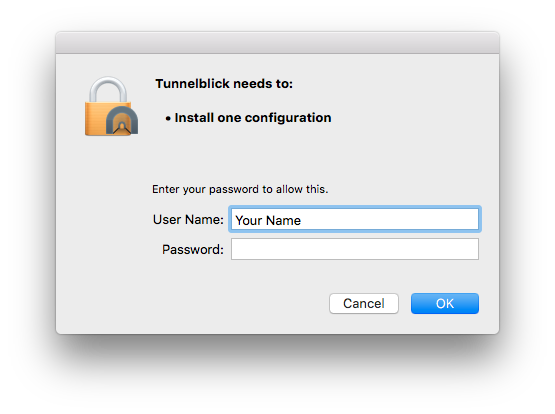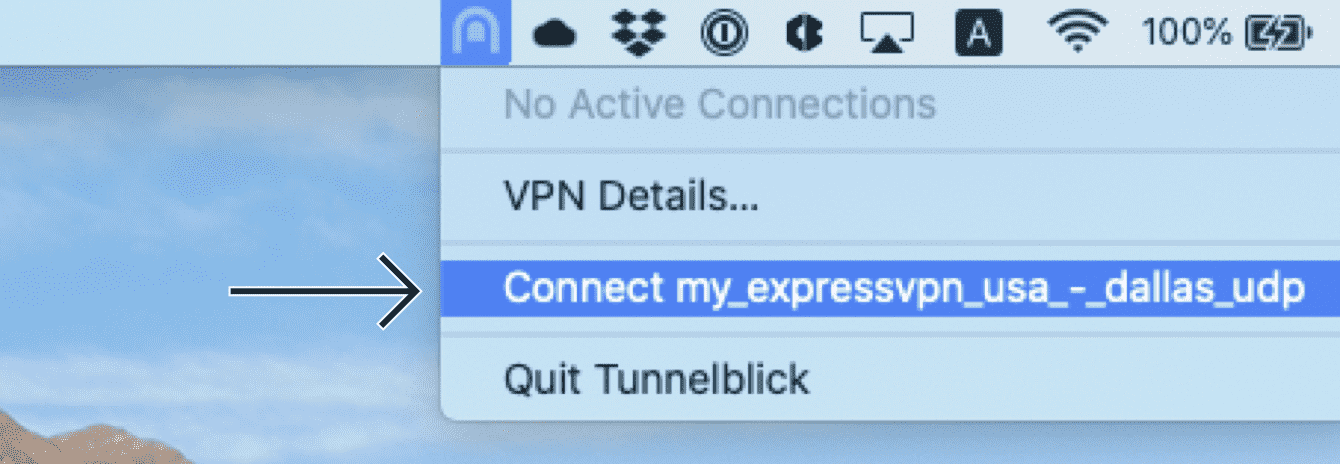

If the user clicks "Retry", Tunnelblick will attempt to connect to the VPN again after the disconnection is complete.Įxit code 3: The configuration is disconnected and Tunnelblick displays a window with the error message and "OK", "Retry", and "Retry with manual response" buttons. If the script fails it should output an error message to stderr, and exit with an exit code of 1, 2, or 3:Įxit code 1: The configuration is disconnected and Tunnelblick displays a window with the error message and an "OK" button.Įxit code 2: The configuration is disconnected and Tunnelblick displays a window with the error message and "OK" and "Retry" buttons. If the script succeeds it should output the response to stdout and exit with an exit code of zero.

The scripts send a specially-formatted error message which causes Tunnelblick to display a window with challenge text from the error message and a place to type in a response. The username, password, and response are then sent to the OpenVPN server and if the are accepted the connection attempt is allowed to continue.ĭynamic challenge/response authentication is done using scripts on the OpenVPN server without anything special in the OpenVPN client's configuration file other than the usual '-auth-user-pass' option used for username/password authentication. (The should be quoted if it contains spaces or other special characters.)Īfter asking for the username/password window or getting them from the Keychain, Tunnelblick will display a window with the and a place to type in a response. Where is the text that is presented to the user, and is 0 to indicate that the user's response should not be echoed, or 1 to indicate the user's response should be echoed. The -static-challenge option should be included in the client OpenVPN configuration file as static-challenge Static challenge/response authentication is done using scripts on the OpenVPN server combined with a '-static-challenge' option in the OpenVPN client's configuration file. OpenVPN and Tunnelblick support two different types of challenge/response authentication, starting with Tunnelblick 3.7.7beta04: The saved credentials can be deleted by selecting the configuration in the list on the left side of the "Configurations" panel of Tunnelblick's "VPN Details" window, clicking the small "gear" icon underneath the list, and clicking "Delete Configuration's Credentials in Keychain".
#Tunnelblick username password password#
They are sent to the OpenVPN server and if approved, the connection attempt continues.Ĭheckboxes in the window allow the user to save the username or the username and password in the macOS Keychain.

When connecting to a VPN, Tunnelblick displays a window that lets the user enter their username and password.

Username/password authentication is done using scripts on the OpenVPN server combined with an '-auth-user-pass' option in an OpenVPN configuration file on the OpenVPN client. challenge/response authentication, which can prove the user has something or the user is something.username/password authentication, which can prove the user knows something.OpenVPN and Tunnelblick support MFA by offering Two-factor authentication ("2FA") is a common form of multi-factor authentication which requires two factors. Multi-factor authentication ("MFA") is a method of confirming an identity by presenting two or more factors: Multi-factor and Two-factor Authentication


 0 kommentar(er)
0 kommentar(er)
